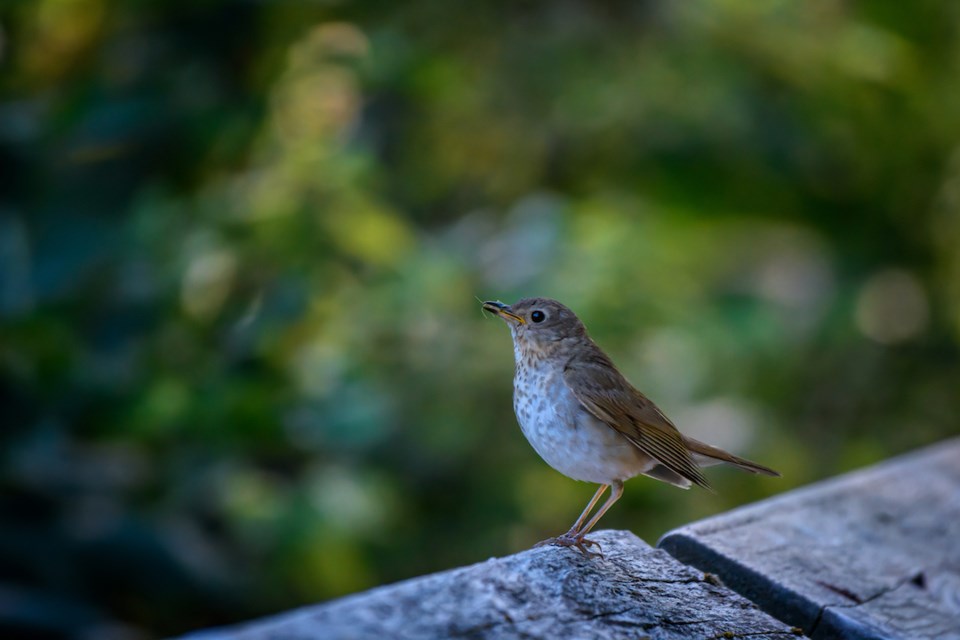May, along with April, is the most dynamic month of the year with regard to bird species coming and going on the Sunshine Coast. By the 31st of the month, all of the 60+ species of birds that arrive to summer and breed on the Sunshine Coast, or those passing through on their way to points farther north, have usually put in an appearance. The only exception is usually common nighthawk which generally arrives in the first week of June after a long migratory flight from South America. This year there was a reliable report of the species on May 20, which is the earliest ever reported for the Sunshine Coast. As I write this on the 24th, only one species is as yet unreported for the year (red-eyed vireo) and it should appear in the next few days.
Swainson’s thrush, “the sound of summer on the Sunshine Coast” was first reported on May 15, when a silent bird responded to a playback of its song. Swainson’s thrush also winters in South America and was a few days late appearing this year, likely because of the cool spring weather. For the first few days after arrival the birds usually confine their vocalisations to “whit” or “weep” notes uttered from the recesses of the forest floor. This year it was a further eight days before I heard the species sing its glorious evening song. However, from here on the birds should be in full voice for the next six weeks as the males sing their morning and evening song as they perform to attract a mate and then defend their nesting territory. The species is abundant in all low and mid-elevation forest habitats, and only absent from heavily built-up areas.
When millions of birds of many species are on their migratory movements, there are always a few that stray away from their usual paths and then we have a “rare” bird. It has been a mundane spring for rarities so far, with the flock of white pelicans reported in Porpoise Bay in the first week of May an exception. However, on the 22nd, Elise Rudland looked out and spotted a northern mockingbird along the beachfront in Halfmoon Bay. There have also been two separate reports of Nashville warbler. Other uncommon, but expected migrants, have been a single lazuli bunting and western kingbirds. A number of people have reported evening grosbeaks, part of an influx. Out on the water, John Field encountered a huge flock of 2,500 Pacific loons in Malaspina Strait, part of a regular movement of the species through the Salish Sea in the second half of May.
To report a sighting or ask a question contact [email protected] or 885-5539. Good Birding.



